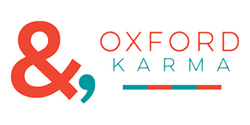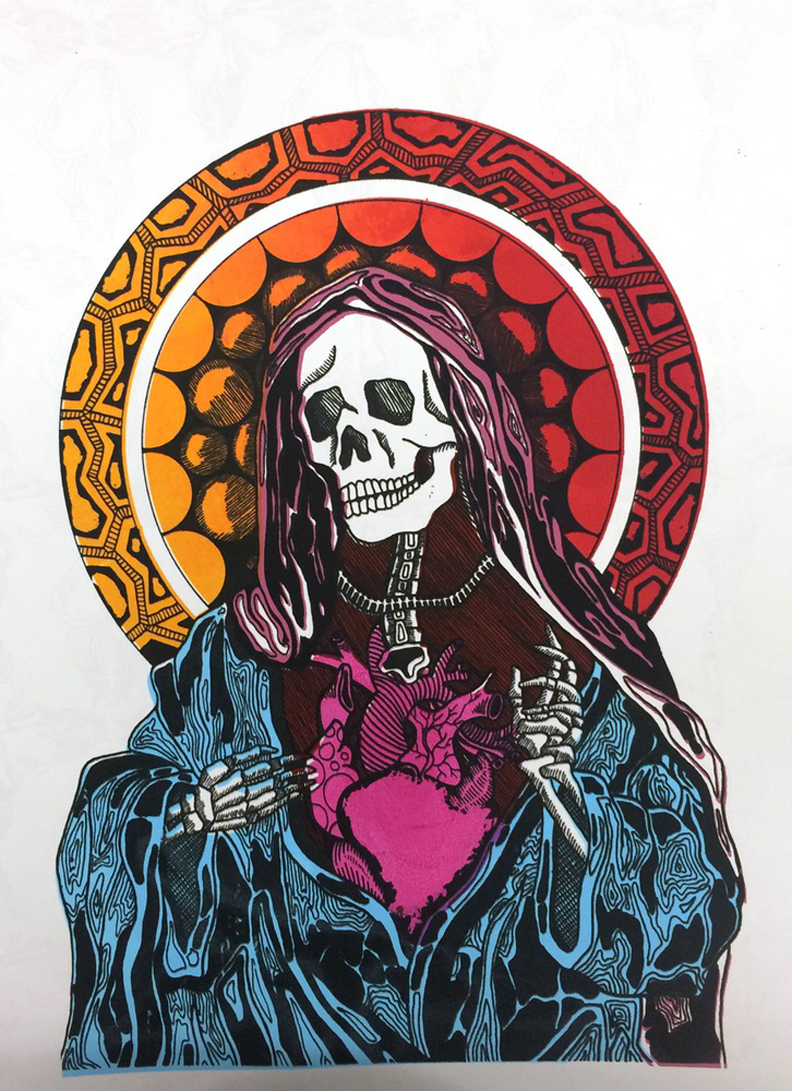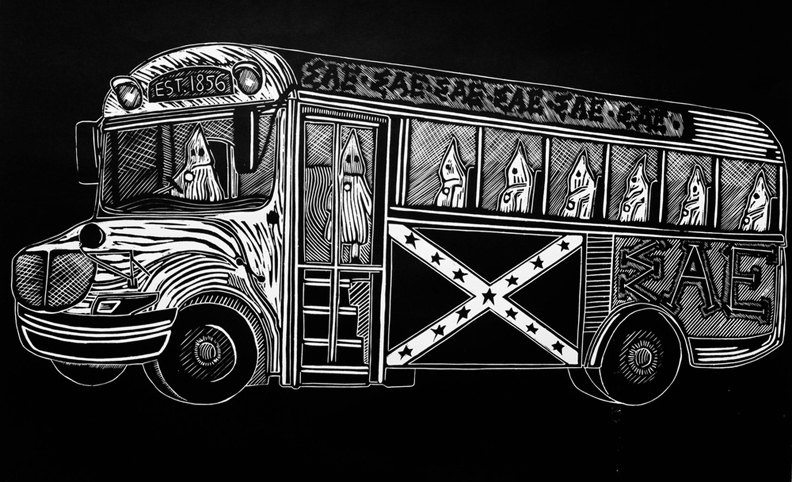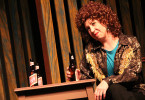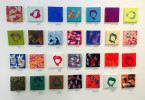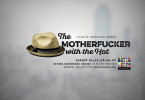New work by Logan Sweetwood
Friday, Aug. 14
Bigfoot Creative | Norman
Art serves many functions, but maybe the most important of which is starting conversations. Norman artist Logan Sweetwood has done plenty of that in the past year, responding to Oklahoma’s social and political strife with pointed pieces that confront problems at their core. While the University of Oklahoma student’s portfolio is filled with attention-grabbing pieces for nothing more than pure aesthetic reasons, it’s his more politically charged work that really stick with you. We spoke to Sweetwood about his journey into carving, racism, and talking about the problem.
Oxford Karma: When do you first remember thinking of art as something you might want to do as a career?
Logan Sweetwood: As a kid, my brothers and I were always encouraged to make art; it was something that my parents instilled in us at a young age. So when it came time to go to college and choose a career, I wanted to do something that allowed me to be creative. Originally, I was in the graphic design/visual communication program at the University of Oklahoma, and part of the curriculum involves studio classes, which sparked my interest in printmaking. Printmaking became an outlet of expression which allowed me the opportunity to break free from the constrictions of my design work. I remember a group of design alumni that came to talk to the students one day. After listening to countless stories of them working late hours cooped up in an office building staring at a computer screen, I realized this was not what I wanted to do. I stood up in the middle of the lecture, walked out and changed my major the very next day.
OK: How has your interest and approaches to art evolved over the years, especially since you started college?
Sweetwood: I feel that as an artist, evolution is an important concept. I have only been making prints for about two years now, so I am fairly new to the art form. Therefore, I feel that If I am not continually developing and growing then my art is dead. Each piece I make I learn something new from it, whether it’s a new way to carve, a more effective way to print, or developing conceptually. From an academic standpoint, college has helped me find meaning in my work and it has taught me how to exist and be successful in the modern art world.
OK: What led you in the direction of printmaking?
Sweetwood: I feel that it is important to be well-versed in a multitude of mediums. The world of printmaking has an almost unlimited number of techniques and processes one can choose. While working on my B.F.A., I have been exposed to a great deal of information and opportunities to make art. I originally started with lithography. After I felt comfortable with that I moved to the next medium, screenprinting, and then on to woodblock carvings. Woodblocks were the one medium I have struggled with the most, so I challenged myself to understand the technique. I remember my first printmaking class I ever took and being blown away by the woodblock carvings of my professor Marwin Begaye. My first woodblock was so terrible, my cuts were crooked, inconsistent, and nothing looked the way I wanted it to. This frustration motivated me to work through the obstacles this medium posed. After spending countless hours carving and resolving issues, I began to understand the reductive process of carving. It has become one of my favorite mediums; there is no other technique in which you can achieve the stylistic aesthetics that woodblock carving allows.
OK: What do you think the woodblock printing offers that other forms don’t?
Sweetwood: There is no other method that allows the stylistic mark-making you get from woodblock carving. It allows for a quick and effective means to producing imagery — I can take a woodblock anywhere and carve anywhere.
OK: You’ve definitely made a point of responding to national crises (the SAE chant, Eric Harris) with your art as of late. How important do you think it is to provoke thought like that with your art?
Sweetwood: Throughout my art career, I have tried to stay away from political issues. I love the idea of making art for the sake of making art. Sometimes we need a break from the loaded imagery you tend to find in the art world. At the same time, I think it is important to balance that idea with art that stirs emotion and addresses important issues in our society. After spending countless days walking past CNN, CNBC, and other news station vans, I found myself very frustrated with the ignorance of the people who attend my college. Honestly, I was a little pissed off having to be associated with OU and the events that occurred in my town. This was not a one-time occurrence, and this is not something that will just go away. It is, however, something that needed to be addressed. And what better way than to create art that reflected the events at OU and hang them in our school’s gallery? Sometimes art needs to push the limits of what is acceptable, but at the same time maintain its core message. Racism is something that is deeply rooted within our culture and these “social groups” within our society. The same people leading these racist chants will become our politicians, our lawmakers, and our leaders. Ignorance like this is something I will not tolerate and will always speak against. I have and will continue to make it a point to use art as a tool to speak up against this type of social injustice.
OK: What sort of responses have you gotten, specifically to pieces like that?
Sweetwood: I honestly had no clue as to how people would respond to these pieces. Being at OU where a large majority of the population participates in the Greek organizations, I didn’t have much hope. To my surprise, I have received more positive feedback than negative. During our capstone show, I even had a guy walk up to me, wearing his fraternity shirt, and say, “I feel really embarrassed to be wearing this shirt and to be a part of this organization.” I think it surprised my professors and fellow students as well, but that’s what being a printmaker is about: We push the limits and say what no one else will. This type of work has allowed me to have a voice and speak about issues relevant to my community.
OK: Is there much pushback from friends or family, being in a (mostly) conservative place like Oklahoma?
Sweetwood: Honestly, no. As conservative as Oklahoma is, I feel that we have this growing population of open-minded and progressive thinkers. I have a lot of friends and people my age who just complain about things here in Oklahoma and all they talk about is wanting to leave, but I think that it is important for people like us to stick around and create the changes we want to see in our communities. Between Tulsa, OKC, and even Norman, there is this awesome growing community of artists, musicians, and other creative individuals that continue to make Oklahoma a better place for us all.
OK: Where do you hope or plan to see your art grow and evolve heading into the near future?
Sweetwood: I plan on attending graduate school in the fall of 2016, so the majority of my efforts will be spent preparing and building my portfolio. In the past few months, I have been doing a large amount of ceramic work as well, investigating printmaking on clay, and combining my two favorite mediums. It involves screenprinting with slip and then transferring it onto the clay body. This adds another dimension to the world of printmaking and allows me the ability to create 3-D imagery with my prints. I also plan on spending a good amount of time doing research regarding race-related issues in our country. This theme has struck home with me and will continue to be a subject matter within my work. Between social media and other outlets, exposure to racial discrimination has continued to be a persistent problem within our society.
